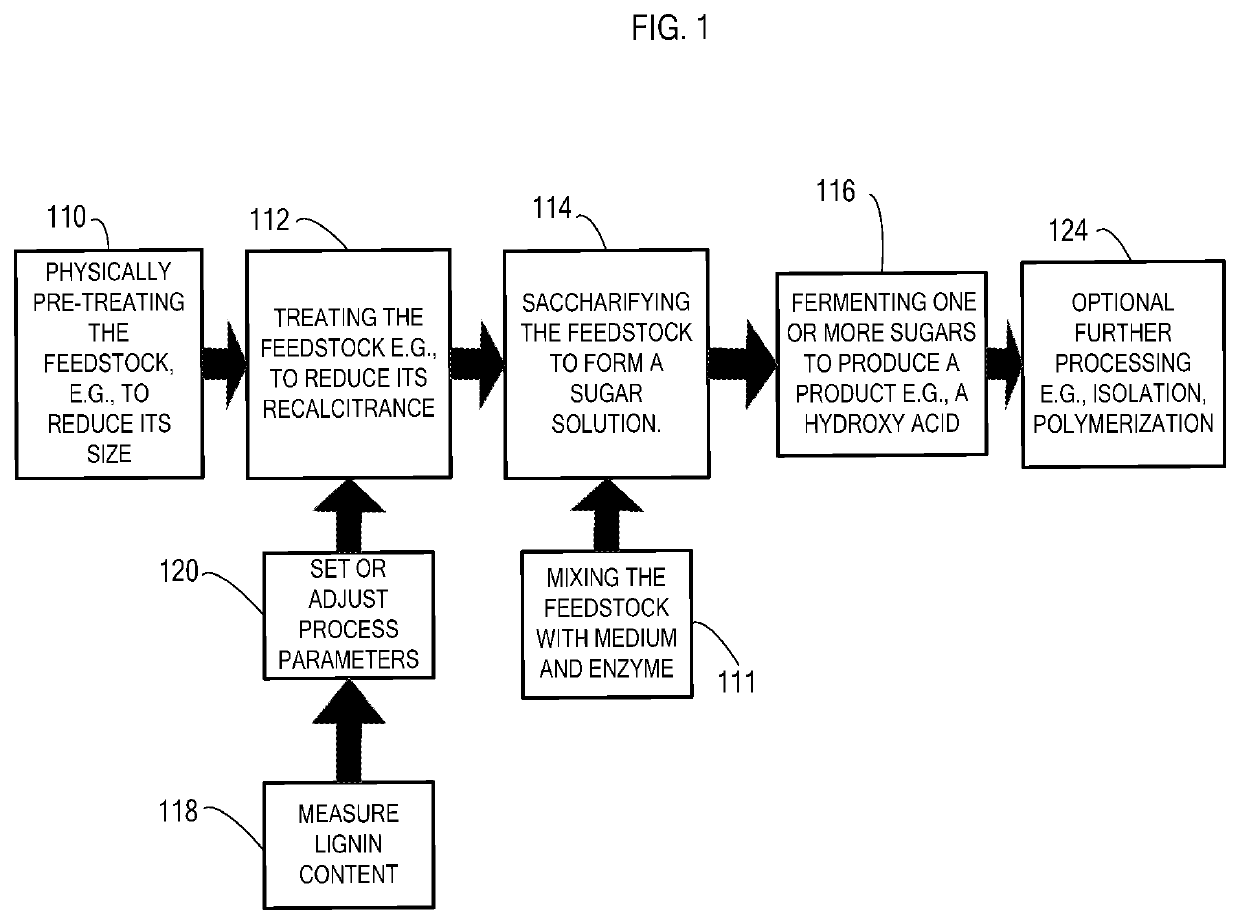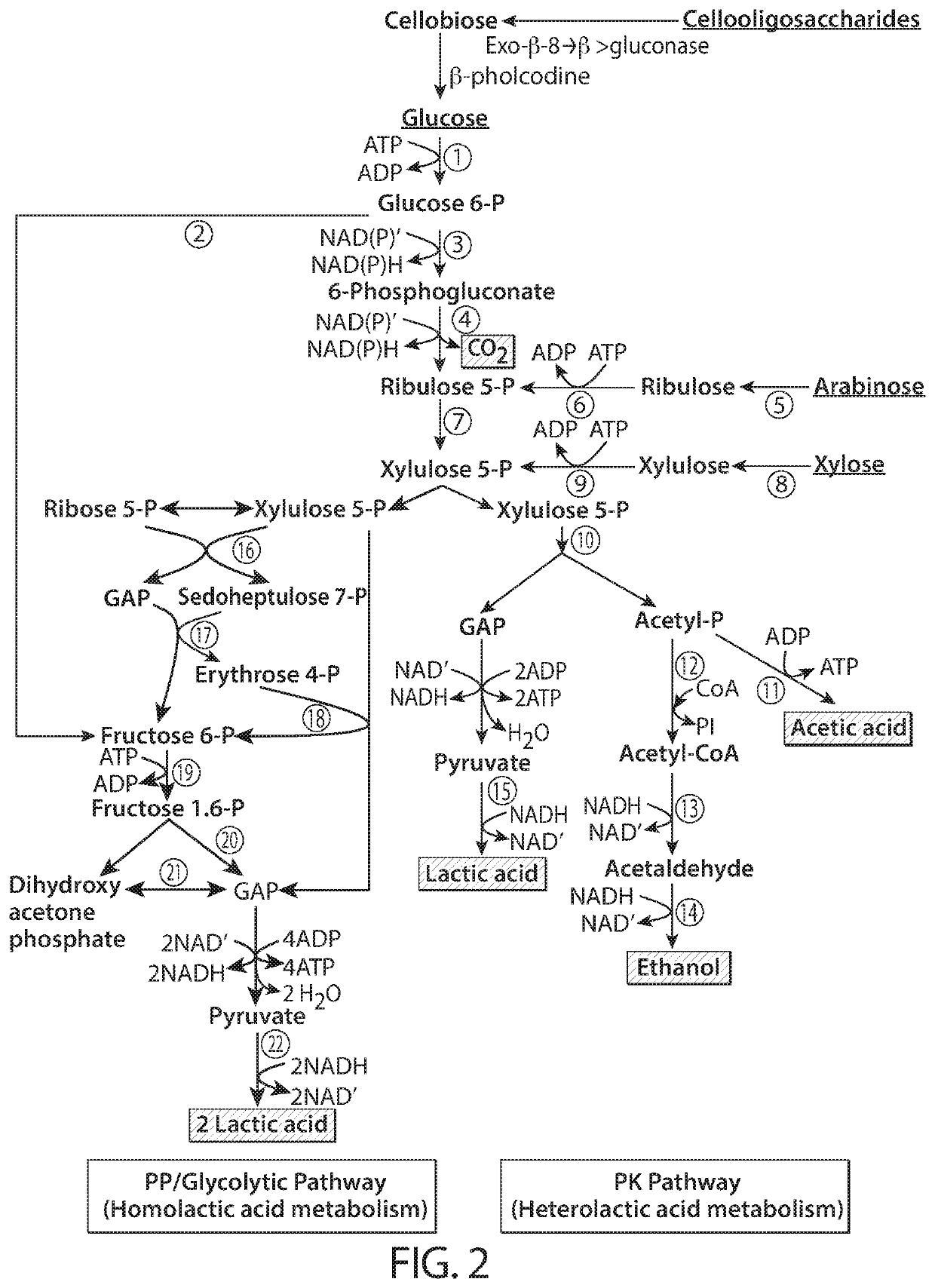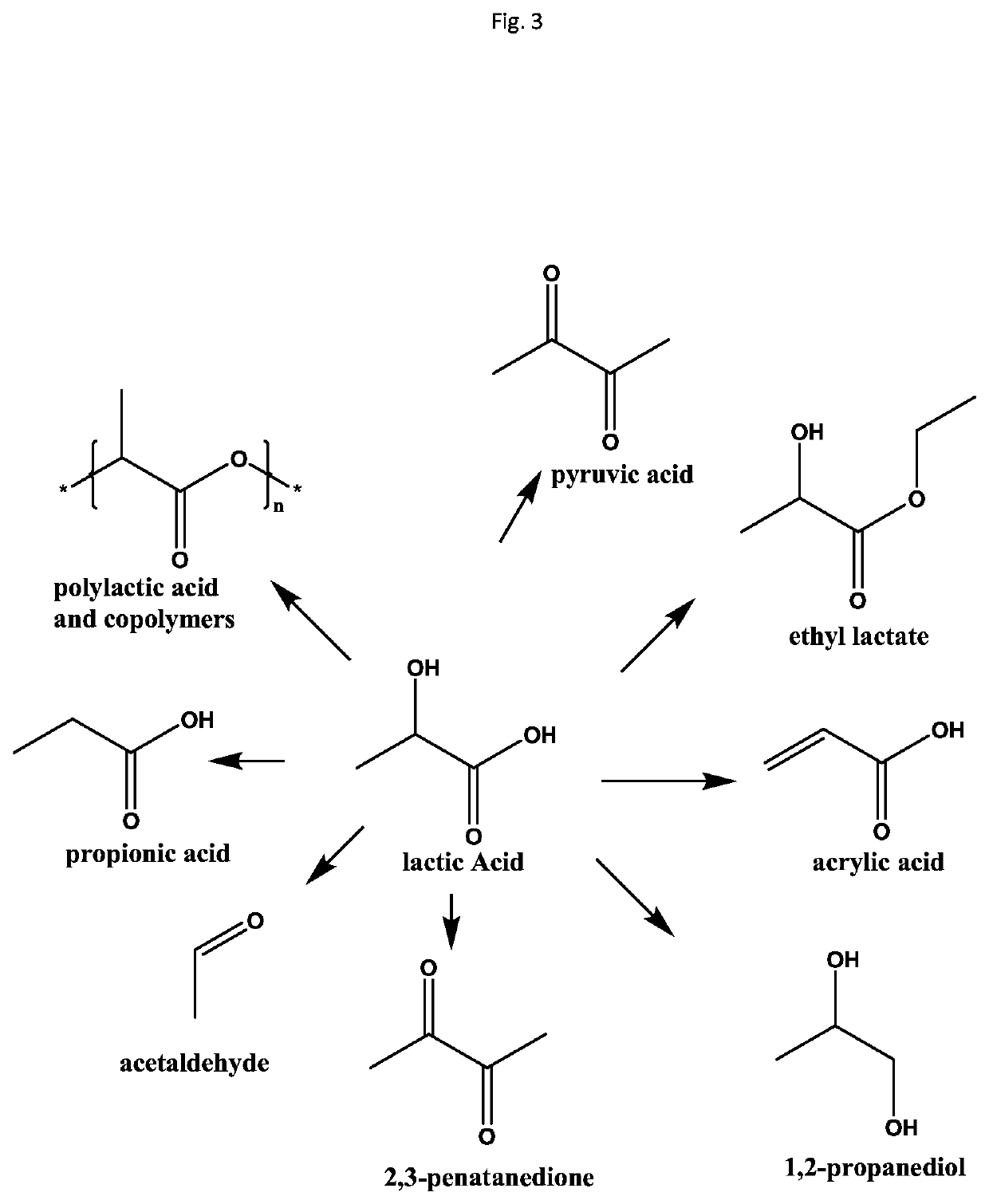Processing biomass to obtain hydroxylcarboxylic acids
a technology of hydroxylcarboxylic acids and biomass, which is applied in chemical/physical/physical-chemical stationary reactors, chemical apparatus and processes, chemical/physical/physical-chemical processes, etc., can solve the problems of low yield of cellulosic materials (relative to theoretical yields) when contacted, and the material is often under-utilized, etc., to achieve high biomass conversion and high production rate
- Summary
- Abstract
- Description
- Claims
- Application Information
AI Technical Summary
Benefits of technology
Problems solved by technology
Method used
Image
Examples
examples
L-Lactic Acid Production from Saccharified Corncob in Lactobacillus Species.
Material and Methods
Lactic Acid Producing Strains Tested:
[0302]The Lactic acid producing stains that were tested are listed in Table 2
[0303]
TABLE 2Lactic acid producing strains testedNRRL B-441Lactobacillus caseiNRRL B-445Lactobacillus rhamnosusNRRL B-763Lactobacillus delbrueckii subspecies delbrueckiiATCC 8014Lactobacillus plantarumATCC 9649Lactobacillus delbrueckii subspecies delbrueckiiB-4525Lactobacillus delbrueckii subspecies lactisB-4390Lactobacillus corniformis subspecies torquensB-227Lactobacillus pentosusB-4527Lactobacillus brevisATCC 25745Pediococcus pentosaceusNRRL 395Rhizopus oryzaeCBS 112.07Rhizopus oryzaeCBS 127.08Rhizopus oryzaeCBS 396.95Rhizopus oryzae
Seed Culture
[0304]Cells from a frozen (−80° C.) cell bank were cultivated in propagation medium (BD DIFCO™ Lactobacilli MRS Broth) at 37° C., with 150 rpm stiffing for 20 hours. This seed culture was transferred to a 1.2 L (or optionally a 20 L)...
PUM
| Property | Measurement | Unit |
|---|---|---|
| temperature | aaaaa | aaaaa |
| temperature | aaaaa | aaaaa |
| temperature | aaaaa | aaaaa |
Abstract
Description
Claims
Application Information
 Login to View More
Login to View More - R&D
- Intellectual Property
- Life Sciences
- Materials
- Tech Scout
- Unparalleled Data Quality
- Higher Quality Content
- 60% Fewer Hallucinations
Browse by: Latest US Patents, China's latest patents, Technical Efficacy Thesaurus, Application Domain, Technology Topic, Popular Technical Reports.
© 2025 PatSnap. All rights reserved.Legal|Privacy policy|Modern Slavery Act Transparency Statement|Sitemap|About US| Contact US: help@patsnap.com



